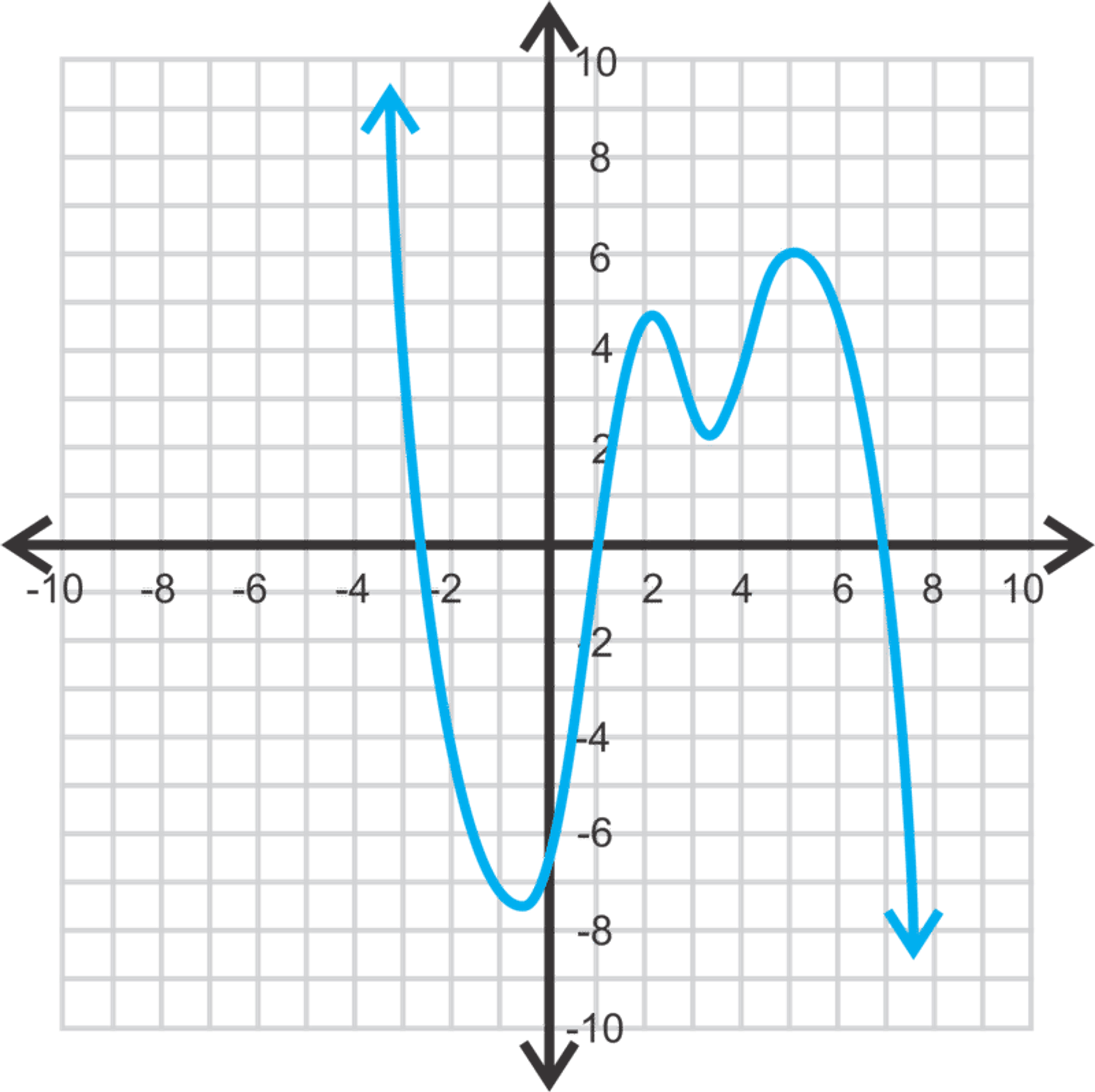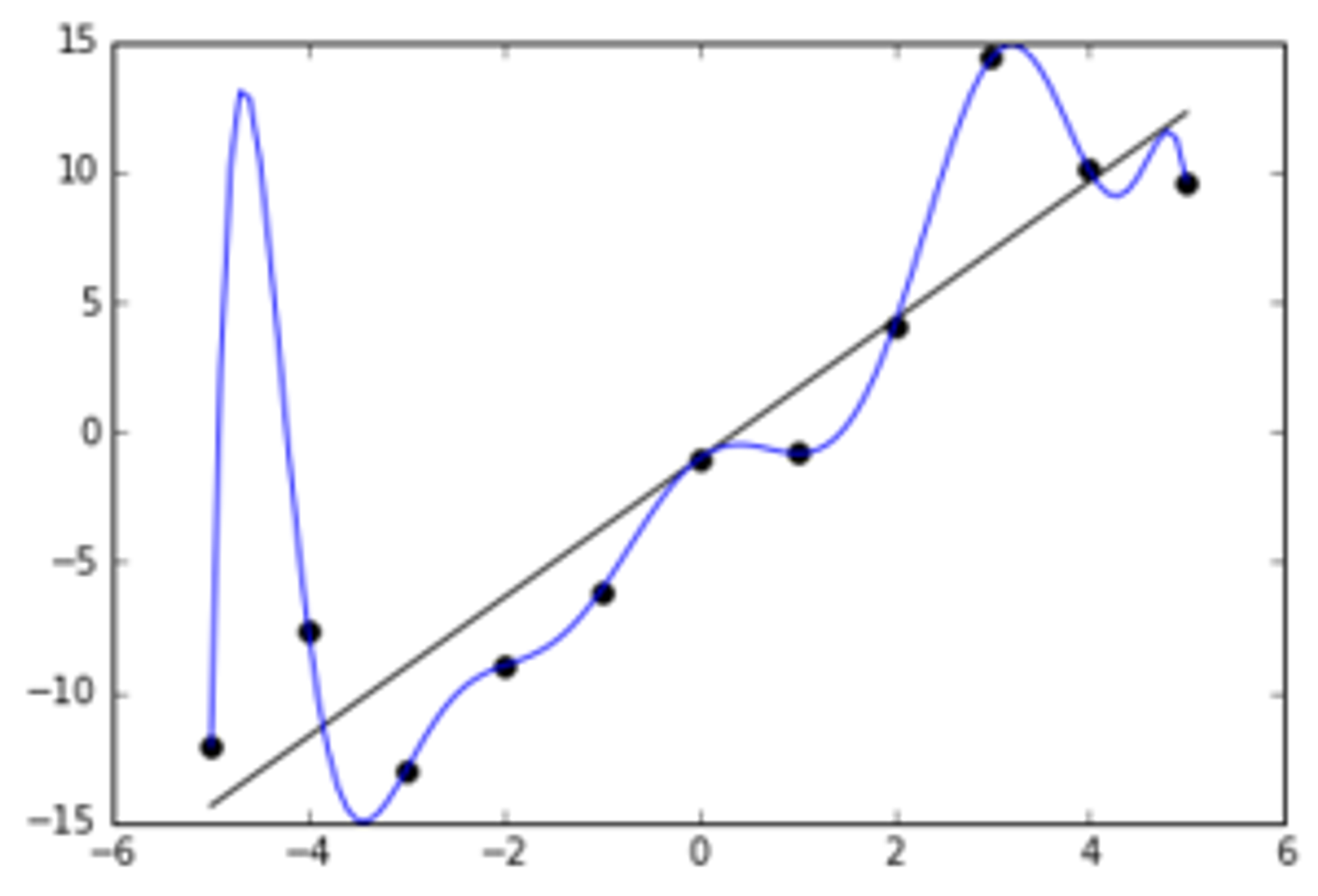Now that we have discussed a few kinds of Linear Regression, it's time to move into non-linear regression. Like your time at school, the easiest stepping stone is Polynomials.
Just for revision, polynomials are rational expressions that follow the format:
Depending on whatever value of you use
Often, polynomial functions can fit data better because they're capable of producing more complex curves, like so:

With polynomial regression, we want to produce a polynomial model that fits the data well, just like we did with linear regression.
2 Questions about the polynomial model
1. What is ?
Essentially, we have to decide what degree of polynomial you want to use to model the data. This can be a matter of trying out the possibilities, but sklearn makes it easy to do this. However, make sure you don't choose too large of a value for because that can easily cause your model to overfit by introducing too much complexity. For example, a simple linear regression would probably be sufficient in the below example. However, when you run polynomial regression on the data with a high , you can create curves that don't generalize to new data very well:

2. What parameters do we want?
This we'll deal with the way we have always dealt with parameters, so that's not a big deal.
Next Section
Copyright © 2021 Code 4 Tomorrow. All rights reserved.
The code in this course is licensed under the MIT License.
If you would like to use content from any of our courses, you must obtain our explicit written permission and provide credit. Please contact classes@code4tomorrow.org for inquiries.